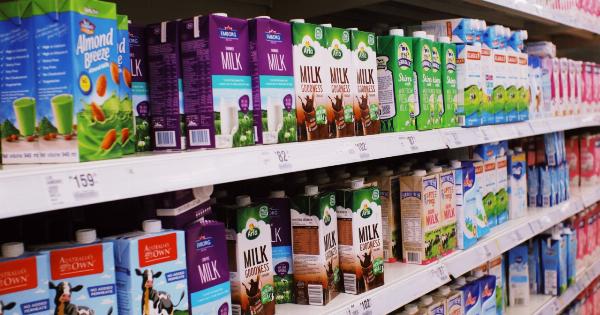When it comes to buying milk, there are a few factors to consider to ensure you are getting a product that suits your needs and preferences.
From choosing the right type of milk to understanding the label and storage methods, this ultimate guide will help you make informed decisions while purchasing milk.
1. Different Types of Milk
Before diving into the buying process, it is crucial to understand the various types of milk available in the market. The most common options include:.
a) Whole Milk: Whole milk contains about 3.5% fat and is the closest to its natural state.
b) Skimmed Milk: Skimmed milk is fat-free milk where the cream is removed, resulting in a lower fat content.
c) Semi-Skimmed Milk: This type of milk is a blend of whole milk and skimmed milk, with a fat content ranging between 1.5% to 1.8%.
d) Lactose-Free Milk: Lactose-free milk is specially processed to remove lactose, making it suitable for individuals with lactose intolerance.
2. Organic vs. Conventional
One important aspect to consider while purchasing milk is whether to opt for organic or conventional varieties. Organic milk is produced without the use of synthetic fertilizers, pesticides, or antibiotics.
It is obtained from cows that are fed with organic feed and raised in natural conditions. On the other hand, conventional milk is produced using conventional farming practices that may involve the use of chemicals and growth hormones.
3. Label Information
Understanding the label information on milk packaging is crucial to ensure you are making an informed choice. Here are some key terms to consider:.
a) Fat Percentage: The fat content of milk is indicated on the label, allowing you to choose the desired level of richness.
b) Pasteurization: Milk is pasteurized to kill harmful bacteria. Look for terms like “pasteurized” or “ultra-pasteurized” on the label.
c) Expiry Date: Check the expiry date to ensure the milk is fresh and safe to consume.
4. Source and Quality
Knowing the source and quality of the milk you buy is essential for both taste and health reasons. Look for dairy brands that have a good reputation for producing high-quality milk.
Additionally, check if the milk is sourced from local farms, which often ensures freshness.
5. Packaging
The packaging of milk plays a crucial role in maintaining its freshness and preserving its nutritional value. Opt for milk packaged in light-resistant containers to prevent exposure to light, which can degrade the milk’s nutrients and flavor.
Additionally, ensure that the packaging is intact and free from leaks or damages to avoid spoilage.
6. Price Comparison
Comparing prices of different milk brands and types is a wise practice before making a purchase. However, it is essential to consider the factors mentioned above along with the price to ensure you are getting value for your money.
Cheaper options may compromise on quality or sourcing practices.
7. Storage and Shelf Life
Proper storage of milk is crucial to maintain its freshness and extend its shelf life. Here are a few tips:.
a) Refrigeration: Store milk in the refrigerator at a temperature between 36°F and 40°F to slow down bacterial growth.
b) Keep Away from Odor-Producing Foods: Milk can absorb odors from other foods, so store it away from items with strong odors.
c) Avoid Temperature Fluctuations: Keep milk away from temperature fluctuations as they can lead to spoilage.
d) Check Expiry Date: Always consume milk before the expiry date mentioned on the packaging.
8. Sourcing Locally
Buying milk from local farms or dairy producers not only supports the local economy but also ensures freshness and quality. Look for farmers’ markets or farm stands in your area that offer locally sourced milk.
This also allows you to have a direct conversation with the producers, gaining insights into their farming practices.
9. Considerations for Special Dietary Needs
If you have specific dietary restrictions or preferences, there are milk alternatives available in the market. Some popular options include soy milk, almond milk, oat milk, and coconut milk.
These alternatives cater to people who are lactose intolerant, have dietary restrictions, or follow a vegan lifestyle.
10. Additional Tips
Here are a few additional tips to keep in mind while buying milk:.
a) Check for Certifications: Look for certifications like the USDA Organic seal or Non-GMO Project Verified label to ensure the milk meets specific standards.
b) Read Reviews: Read online reviews or seek recommendations from friends and family to get insights into the taste, quality, and reliability of different milk brands.
c) Explore Local Co-ops: Joining a local co-op or a group of consumers interested in buying milk directly from farmers can help you access fresh and organic milk at a reasonable price.






























